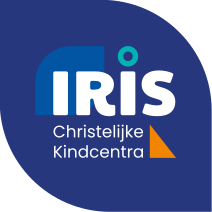Central control with room for local freedom
Whether you have multiple brands, schools, labels or branches, or operate in different countries-Plate Multi Site gives you complete control over appearance, security and content quality. One powerful platform that lets you keep control of all your websites, without sacrificing flexibility.

With Plate Multi Site, you keep control of your branding from the central design system, while local teams can customize colors and fonts within the branding style of a specific component. This keeps your look consistent, without creative limitations.
With Plate Multi Site, you keep control of your branding from the central design system, while local teams can customize colors and fonts within the branding style of a specific component. This keeps your look consistent, without creative limitations.
What Plate Multi Site excels at: smart, fast and hassle-free
With over 10 years of CMS-experience and 100+ multi site implementations, we at Plate have incorporated all the knowledge directly into our platform. You get a turnkey multi site solution that works, without the hassle.
Consistent branding, secured centrally
You no longer develop separate websites, but set up new sites from a central design system. This guarantees the corporate identity, keeps your branding consistent and creates reusable building blocks for all your websites and channels. Once set up properly, always uniform and scalable.


A super user-friendly CMS
With Plate Multi Site, you have complete control over your websites and content without the need for technical knowledge. No other CMS offers such a strong blend of ease of use, power and flexibility.

Always up-to-date and reliable content
Multiple sites? Then the risk of outdated information grows. With Plate Multi Site, you can manage content centrally or locally, effortlessly exchange content between the different websites and determine exactly who can edit what. This way, you keep control and avoid mistakes.
Just the benefits of multi site not the headaches
Plate Multi Site removes the familiar frustrations that organizations often face when working with large numbers of sites. It is designed to give you complete control over your websites and content.
Authentic People,
Real Impact



Getting started with Plate Multi Site
Do you manage multiple websites and want control over branding, content and security? Plate Multi Site is the solution for organizations with a central marketing team and a challenging website landscape. Work more efficiently from one powerful platform.
Curious about the possibilities? Check out the license prices, book a demo or contact us.
Ready to overcome your website challenges?
Talk to us without obligation, or request a demo. Johannes will be happy to meet with you and tell you how Plate Multi Site can help you reduce website hassles. Get in touch and discover the difference!















.jpeg?width=768&height=660&format=jpeg&crop=41%2C0%2C686%2C800&signature=15244f0affbe4db211eb2ab20970b72beb0daadc)




